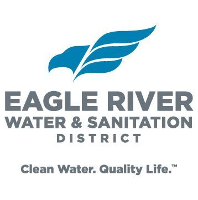New WHO framework aims to tackle rising resistance to HIV, STI, and hepatitis treatments – CIDRAP
.jpg?#)
Global Framework to Combat Drug Resistance and Advance Sustainable Development Goal 3
Threats to SDG 3.3: Ending Epidemics
The World Health Organization (WHO) has launched an integrated drug resistance action framework to address the growing threat of antimicrobial resistance (AMR) in HIV, viral hepatitis, and sexually transmitted infections (STIs). This initiative is critical for achieving Sustainable Development Goal (SDG) Target 3.3, which aims to end the epidemics of these communicable diseases by 2030. Rising drug resistance threatens to reverse decades of progress by causing:
- Increased rates of new infections and treatment failure.
- Higher preventable morbidity and mortality.
- The undermining of global disease elimination goals.
Challenges to Universal Health Coverage (SDG 3.8) and Health Equity (SDG 10)
The effectiveness of essential medicines, a cornerstone of Universal Health Coverage (SDG 3.8), is being compromised. The impact is particularly acute in vulnerable regions, exacerbating inequalities as outlined in SDG 10.
- HIV: In some low- and middle-income countries, resistance to dolutegravir-based antiretroviral therapy among patients with unsuppressed viral loads ranges from 5% to 20%.
- STIs: Resistance to first-line treatments for Neisseria gonorrhoeae has increased substantially, leaving some patients with limited therapeutic options.
- Hepatitis B and C: While current treatments remain highly effective, concerns about emerging resistance are growing as treatment access is expanded globally.
A Strategic Framework Aligned with Global Goals (SDG 3.d and SDG 17)
Building on the Global Action Plan on Antimicrobial Resistance, the WHO framework proposes a unified, people-centered approach. It outlines strategic priorities across five domains essential for strengthening global health security (SDG 3.d) and fostering partnerships (SDG 17).
- Prevention and Response: Implementing strategies to prevent the emergence and spread of drug resistance.
- Monitoring and Surveillance: Enhancing systems to track resistance patterns and inform public health actions.
- Research and Innovation: Fostering the development of new diagnostics, treatments, and preventive tools.
- Laboratory Capacity: Strengthening laboratory infrastructure and capabilities for accurate diagnosis and resistance testing.
- Governance: Promoting collaborative action and robust policy frameworks among countries, communities, and partners to preserve the efficacy of life-saving medicines.
Analysis of Sustainable Development Goals (SDGs) in the Article
1. Which SDGs are addressed or connected to the issues highlighted in the article?
The article primarily addresses issues related to the following Sustainable Development Goals:
- SDG 3: Good Health and Well-being: This is the most central SDG, as the article focuses on the threat of drug resistance to treatments for HIV, hepatitis, and STIs. The potential for “rising rates of new infections and treatment failure” and “preventable morbidity and mortality” directly impacts the goal of ensuring healthy lives and promoting well-being for all.
- SDG 17: Partnerships for the Goals: The article highlights the need for a collaborative global response. The WHO’s framework is described as a “unified global approach” and a “call to action for countries, communities and partners to unite around a shared agenda,” which directly aligns with the principles of partnership for sustainable development.
2. What specific targets under those SDGs can be identified based on the article’s content?
Based on the article’s content, the following specific targets can be identified:
- Target 3.3: By 2030, end the epidemics of AIDS, tuberculosis, malaria and neglected tropical diseases and combat hepatitis, water-borne diseases and other communicable diseases.
- Explanation: The article explicitly discusses the challenge of drug resistance to treatments for “HIV, hepatitis B and C, and sexually transmitted infections (STIs).” It warns that this resistance could “undo decades of progress in HIV, hepatitis, and STI control, and undermine global elimination goals,” directly threatening the achievement of this target.
- Target 3.8: Achieve universal health coverage, including financial risk protection, access to quality essential health-care services and access to safe, effective, quality and affordable essential medicines and vaccines for all.
- Explanation: The core issue of drug resistance compromises the “effectiveness of life-saving antimicrobial drugs.” The article notes that for some gonorrhea patients, there are “limited treatment options” left. The WHO’s framework aims to “preserve the effectiveness” of these essential medicines, which is a cornerstone of achieving universal health coverage.
- Target 3.d: Strengthen the capacity of all countries, in particular developing countries, for early warning, risk reduction and management of national and global health risks.
- Explanation: The WHO’s action framework is designed to manage the global health risk of antimicrobial resistance. It outlines strategic actions across key domains including “prevention and response; monitoring and surveillance; … and laboratory capacity,” which are all essential components for strengthening a country’s capacity to manage health risks as stipulated in this target.
- Target 17.16: Enhance the global partnership for sustainable development, complemented by multi-stakeholder partnerships that mobilize and share knowledge, expertise, technology and financial resources.
- Explanation: The article emphasizes the WHO’s call for a “unified global approach” and for “countries, communities and partners to unite.” This collaborative model, which brings together different stakeholders to tackle a shared global health challenge, is the essence of Target 17.16.
3. Are there any indicators mentioned or implied in the article that can be used to measure progress towards the identified targets?
Yes, the article mentions or implies several indicators that can be used to measure progress:
- Rates of drug resistance in specific pathogens: The article provides concrete data that serves as a direct indicator. For example, “resistance to dolutegravir-based antiretroviral therapy has been reported… with resistance rates ranging from 5% to 20%” in HIV patients. Similarly, it notes that “Resistance to first-line treatments for Neisseria gonorrhoeae… have substantially increased.” Monitoring these resistance rates is a key indicator of the challenge to Target 3.3.
- Rates of new infections and treatment failure: The article warns that drug resistance could lead to “rising rates of new infections and treatment failure.” These rates are critical indicators for measuring progress towards ending epidemics (Target 3.3). A decrease in treatment failure would signify progress.
- Morbidity and mortality rates from specific diseases: The article mentions the risk of increased “preventable morbidity and mortality” due to drug resistance. Tracking the death and disease rates associated with drug-resistant HIV, hepatitis, and STIs would be a direct indicator of the impact on public health and progress towards Target 3.3.
- Implementation of global action frameworks: The existence and adoption of the “WHO’s integrated drug resistance action framework” itself serves as an indicator of global cooperation and capacity building. The framework’s strategic priorities, such as “monitoring and surveillance” and “laboratory capacity,” are measurable components that align with the goals of Target 3.d and Target 17.16.
Table of SDGs, Targets, and Indicators
| SDGs | Targets | Indicators Identified in the Article |
|---|---|---|
| SDG 3: Good Health and Well-being | Target 3.3: End the epidemics of AIDS, hepatitis, and other communicable diseases. |
|
| SDG 3: Good Health and Well-being | Target 3.8: Achieve universal health coverage, including access to safe, effective, quality and affordable essential medicines. |
|
| SDG 3: Good Health and Well-being | Target 3.d: Strengthen the capacity for early warning, risk reduction and management of national and global health risks. |
|
| SDG 17: Partnerships for the Goals | Target 17.16: Enhance the global partnership for sustainable development. |
|
Source: cidrap.umn.edu
What is Your Reaction?
 Like
0
Like
0
 Dislike
0
Dislike
0
 Love
0
Love
0
 Funny
0
Funny
0
 Angry
0
Angry
0
 Sad
0
Sad
0
 Wow
0
Wow
0




















































.jpg.webp?itok=0ZsAnae9#)


























